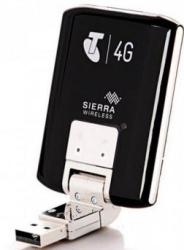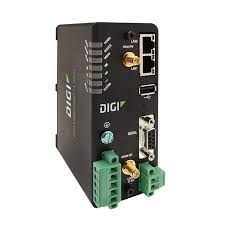These days, we’re blessed with cellular data networks that span great swathes of the Earth. By and large, they’re used to watch TV shows and argue with strangers online. However, they’re also a great tool to use to interact with hardware in remote locations, particularly mobile ones where a wired connection is impractical.
In this series, we’re taking a look at tips and tricks for doing remote cellular admin the right way. First things first, you’ll need a data connection – so let’s look at choosing a modem.
Options Abound
When shopping around for cellular data modems, it can be difficult to wade through the variety of options out there and find something fit for purpose. Modems in this space are often marketed for very specific use cases; at the consumer level, many are designed to be a no-fuss home broadband solution, while in the commercial space, they’re aimed primarily to provide free WiFi for restaurants and cafes. For use in remote admin, the presence of certain features can be critical, so it pays to do your research before spending your hard earned money. We’ve laid out some of the common options below.
Consumer Models

Many telecommunications providers around the world sell cheap USB dongles for connecting to the Internet, with these first becoming popular with the rise of 3G. They’re somewhat less common now in the 5G era, with the market shifting more towards WiFi-enabled devices that share internet among several users. These devices can often be had for under $50, and used on prepaid and contract data plans.
These devices are often the first stop for the budding enthusiast building a project that needs remote admin over the cellular network. However, they come with certain caveats that can make them less attractive for this use. Aimed at home users, they are often heavily locked down with firmware that provides minimal configuration options. They’re generally unable to be set up for port forwarding, even if you can convince your telco to give you a real IP instead of carrier-grade NAT. Worse, many appear to the host computer as a router themselves, adding another layer of NAT that can further complicate things. Perhaps most frustratingly, with these telco-delivered modems, the model number printed on the box is often not a great guide as to what you’re getting.
A perfect example is the Huawei E8327. This comes in a huge number of sub-models, with various versions of the modem operating in different routing modes, on different bands, and some even omitting major features like external antenna connectors. Often, it’s impossible to know exactly what features the device has until you open the box and strip the cover off, at which point you’re unable to return the device for your money back.
All is not lost, however. The use of VPNs can help get around NAT issues, and for the more adventurous, some models even have custom firmware available on the deeper, darker forums on the web. For the truly cash strapped, they’re a viable option for those willing to deal with the inevitable headaches. There are generally some modems that stand out over others in this space for configurability and ease of use. This writer has had great success with a now-aging Sierra Aircard 320U, while others have found luck with the Huawei E3372-607. As per earlier warnings though, you don’t want to accidentally end up with an E3372-608 – thar be dragons.
Commercial and Industrial Hardware
For those who don’t wish to muck around, more serious hardware is naturally available. Commercial and industrial grade equipment naturally comes at a higher cost, but is usually fully unlocked to configure as you please. This also avoids the pain of SIM locks, allowing you to use any network you so desire.

At the lower end, products like the Sixfab LTE Base Hat provide a straightforward cellular data connection with a minimum of fuss. Depending on the exact companion parts chosen, it can be set up to suit a variety of regions around the world and optimized for low power consumption or high throughput. At the higher end, you can have just about any set of features you so desire, as long as your pocket book is large enough.
Dual SIM options bring the benefit of fail-over capability to keep your remote system online when signal is poor, while others pack in multiple LAN ports to support many systems. There are even devices on the market specially designed to remotely monitor serial terminal hardware over 4G/LTE with a minimum of fuss. Most devices at this level also feature support for VPNs built in, making it easier to access your remote machines as if they’re on a local network.
At this level, you’ll usually have the benefit of being able to talk to a dealer or retailer about exactly what features you need before you buy. This is in stark contrast to trawling obscure forums for information on consumer cards, and for any serious engineering purposes where time is money, this is the way to go. Such hardware is (usually) better supported by the manufacturer, too, as it’s expected you’ll be using it in a situation that requires high uptime and good reliability.
Summary
In the end, the hardware you decide to use will come down to your use case. If you’re working on a serious project that needs to work, choosing the proper industrial hardware will be the way to go. If you’re having fun with a remote build as a hacker or maker, saving a few bucks might make up for a little hassle in getting things up and running. Of course, the Hackaday community is full of people who have been there and built that, so be sure to sound off in the comments with your best recommendations for picking the right cellular modem. Happy hacking!















No cellular dev boards? Check out the particle boards – great if you just need <1MB per month
I wanted to love the particle but I can’t deal with their cloud IDE. I’m just too paranoid about someone else being able to push firmware to my hardware remotely.
Any clues on how to ‘jailbreak’ particle board? Maybe the cortex can be flashed with the arduino boot loader?
Anyone know how to remove the cloud component from particle? I’d use them every day if I wasn’t stuck with their web IDE / compiler.
while others have found luck with the Huawei E3372-607….
Pretty much everything said in that video is outdated.
agreed, once the cheap china SOC modems hit the hack scene and unlocks from network carriers abound there has been little need to look at other devices in my circles. For me it’s either MKT chips or huawei boot shot modems, also found in cheap android head units too for same reasons . i even run e3372 in production scenario’s via usbmodeswitch + pfsense , and the newer hsense mode gives you direct network connection no MIM router but yet you still get the ip address for modem config, very handy
I had no luck getting my E3372-608h to play ball with usbmodeswitch, but that said, I can’t remember what I was even trying to achieve, now.
It is simply a lot of headaches to try to do port forwarding with cellular carrier. It usually costs a lot more to get an public IP (not sure about IPv6, can someone comment?)
To me, the time it takes for the modem to come online is critical. Some of them takes like a whole minute to come up which is really bad for something that has short up time.
Also, for production use. It is simply a pain to teach customers to set APNs. Does anyone know why carriers all over the world requires these stupid APNs? Why do they require APN in the first place?
AFAIK, the APN is like a subdivision of the cellular signal…kind of like a WiFi radio broadcasting multiple SSIDs. There could be consumer, priority, government, admin, MVNO, and plenty of other ‘profiles’ that a client would want to connect to. I’m not saying it’s the best way – but it certainly still serves a purpose.
Some providers have a catch-all APN. This solves this issue more or less, unless you need to switch the modem from one APN to another but that is unavoidable of course.
Wasn’t there are recent article on selecting the right cellular modem? Also, why isn’t the article tagged with either “cellular” or “modem”? Instead you chose two unique tags which are bizarre.
For anyone looking, I’ve had good experience with PepLink/PepWave MAX BR1 Mini for as a cell router for remote field research stations.
We run IoT devices on cellular for work, and this has been a consistent thorn in my side for the last 5+ years.
There are really not a lot of great options.
Initially, we were able to get some older 2g/3g modems that worked with wvdial. When the carriers started shutting down that service to free up spectrum for 4/5g, I evaluated several modems, and ended up going down the rabbit hole of trying to learn qmi_wwan, cdc-wdm, libqmi, modem-manager…..
This really shouldn’t be that hard of a problem to solve.
Best solution I ended up finding was an all in one usb modem that shows up as it’s own network interface usb0, the ZTE MF833v. Simply grab an IP and you’re off and running with no fuss.
The MF833V has no default way of port forwarding and, to my knowledge, has “dummy” “DMZ” functionality via the web-interface that doesn’t seem to do anything.
I’ve been using UML295s for a long time with a lot of luck. They present themselves to the OS as a usb Ethernet device which saves a ton of headache. Pair it with openwrt and a VPN and you have a pretty potent tool.
Oh, and shoutout to Nate for some basic docs
https://bitbucket.org/accelecon/modemmanager/wiki/PantechUML295
Meanwhile, Verizon has trouble getting reliable 4g service available in far away exotic places like New Jersey.
Whether you are buying a multi-thousand dollar Cisco LTE router, an outdoor integrated antenna LTE UE, or otherwise, you’re basically buying a stock miniPCIe radio modem wrapped in a connector and switch or router. You may be paying a thousand dollars for a fancy case and spiffy brand name but all the heavy lifting is done by a $40 sierra wireless card in a slot.
A really good place to start playing with this stuff is microtik routerboard LTE products. You can get a bare board router and radio modem for about $100 and mix and match for bands.
One caution is you will have to register it on a carrier and at the time you register it you might be required to identify the make and model of equipment. Carriers in the US have a list of certified manufacturers and if it’s not on the list they may not permit activation even if it is on a well known modem card and a carrier supplied SIM card.
I doubt the carrier could tell if it is not a Cisco 819G, but I’m not sure.
I also like the Mikrotik WAP-LTE series. I use one of these to run cameras, a security system and an IP phone in a CONEX box inside of a metro airport. It’s where we keep our search & rescue team equipment ready to go. You can activate yoru SIM card by just popping it into an old iPad or similar device for a day.
I’ve had good success with a ZTE MF910V. Finding a SIM without CG-NAT is the hard thing unless you want to pay a ton. Apparently ZTE used to make their open channel firmware available which would’ve helped me to unlock it from the network but I couldn’t find any firmware for it at all. My telco let me unlock it because I’ve owned it for >6 months, anyway. Otherwise, unlocking the boot loader and pushing firmware was as simple as running Android Debug Bridge. I got root access and enabled persistent SSH. Enabling the SD card was an option and stopping it from mounting itself as a CD ROM.
When it comes to high quality (and price) 4G routers I noticed they almost exclusively use Sierra Wireless modems. They have really great documentation and it seems they’re super reliable for M2M applications.
Those Huawei sticks run Linux/Android inside.
I mirrored the source code of it for a while (3372h-153).
In reading the article and the comments, its clear NimbeLink products are still undiscovered by most readers. Their products make it really easy to add cellular connectivity to embedded products without the proprietary protocols like Particle. Check it out http://www.nimbelink.com
I want to preface this by saying I’m a novice when it come to network engineering… I have installed a Sierra Wireless RV-55 modem/router/wifi unit. I’m in an area with low 4G LTE (Verizon) and had to use a signal booster to get a reasonable cellular signal. I get pretty good internet connectivity with all of this installed. I put IP security cameras on the local net. I get reliable internet connections and can stream content. I can also stream the cameras remotely from an android app but they seem to constantly be disconnected from the LAN and unreachable for several minutes before they finally connect. My wi-fi is rock solid (100%) but something about the M2M connection to these cameras isn’t working correctly. Wish I contribute more to this discussion but I’m just not technically savvy enough to do so. But I’m at a loss about how to troubleshoot because of my lack of knowledge. Any suggestions would be appreciated. I guess the value of this post would be for those who do not have the expertise… this isn’t as easy as simply connecting cameras to you home wifi…